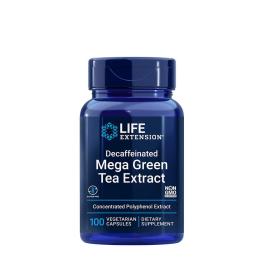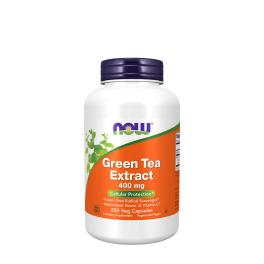The best natural antioxidants for the cold months
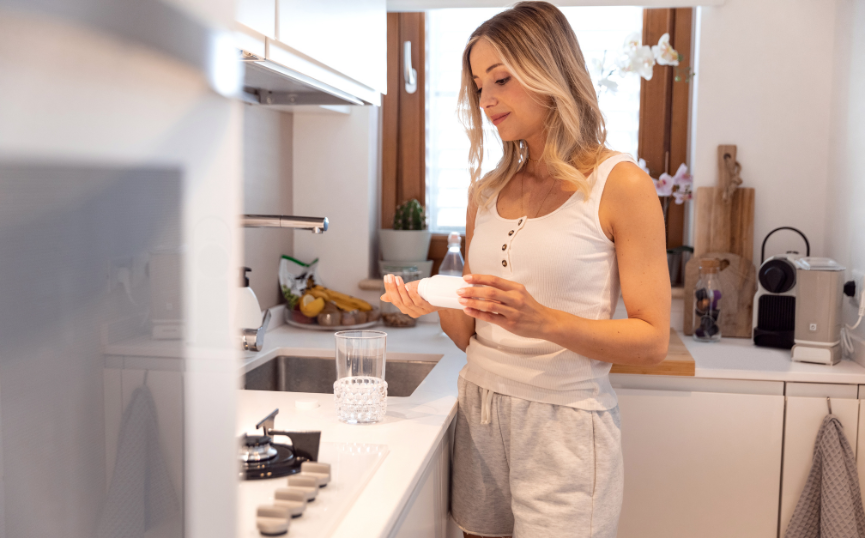
In this article we explain in detail how antioxidants work and why you should pay extra attention to their intake during the cold months. From the almost endless palette of antioxidants, we will now highlight four: green tea extract, resveratrol, grape seed extract and astaxanthin. These are not only extremely beneficial on their own, but also work in combination to enhance the body’s defences.
How do antioxidants work?
As mentioned in the introduction, antioxidants are compounds that neutralise free radicals,1 but what are free radicals?2
Free radicals are electron-deficient, unstable molecules that „desperately struggle” to obtain electrons; they try to „steal” electrons from other molecules. If they manage to steal electrons from molecules in our body cells, they cause cell damage. Well call this oxidative stress.3
Free radicals are also naturally produced in the body, for example during metabolism, but external factors such as alcoholism, smoking, air pollution, UV radiation and consumption of processed foods can increase their formation.4-8 If the body does not have enough antioxidants, free radicals can damage cells, proteins and DNA. Excessive free radical release and/or antioxidant deficiency can contribute to the development of chronic diseases.
Three different antioxidant effects are distinguished:
- Antioxidants can add electrons to free radicals, neutralising their harmful effects. This is the direct antioxidant property and is influenced by the so-called electronegativity (see next chapter).
- Antioxidants may help the body’s own antioxidant defence systems (such as the enzyme glutathione) to function, a so-called indirect antioxidant property.
- They reduce inflammation and support the immune system. In many cases viruses are also attacked by oxidative stress. If the antioxidants also fight this then, so the immune system has less work to do. This can also be classed as an indirect antioxidant property.
However, it is important to remember that as with everything; dosage is key for antioxidants. At very high concentrations or under certain conditions, their antioxidant may have pro-oxidant effects, i.e. they may not necessarily ’repair’ the damage but may trigger further reactions. For this reason, it is vital to maintain a balance between antioxidants and free radicals in the body.
How do antioxidants difer?
There may also be differences in the direct antioxidant effects. This is because each molecule has a different electronegativity – i.e. some molecules are more electron-attractive than others.9-10 So certain antioxidants are more effective at neutralising certain free radicals. There are also differences in indirect effects. The details of this would require an advanced biochemistry class. Suffice it to say that we should aim for variety in our antioxidant supplementation. We should not rely on high doses of vitamin C and D alone, but also turn to other antioxidants such as green tea extract, resveratrol, grape seed extract or astaxanthin.
Let’s look at these in more detail!
1. Green tea extract (EGCG – epigallocatechin-gallate)
The most powerful antioxidant found in green tea extract is EGCG (epigallocatechin-gallate), which:
- Neutralizes free radicals and reduces oxidative stress11
- It also relieves the immune system12
- Similar reasoning suggests that green tea extract has anti-inflammatory properties, which may have a positive effect on arthritis or autoimmune processes13
- It supports metabolism and fat burning, so it can also be effective against winter weight gain.15 EGCG alone has this effect, and caffeine can enhance it. It should be added that the positive effect on fat burning alone is of no value if no energy deficit is created by the meals.
- It protects brain cells and may reduce the risk of neurological diseases.14
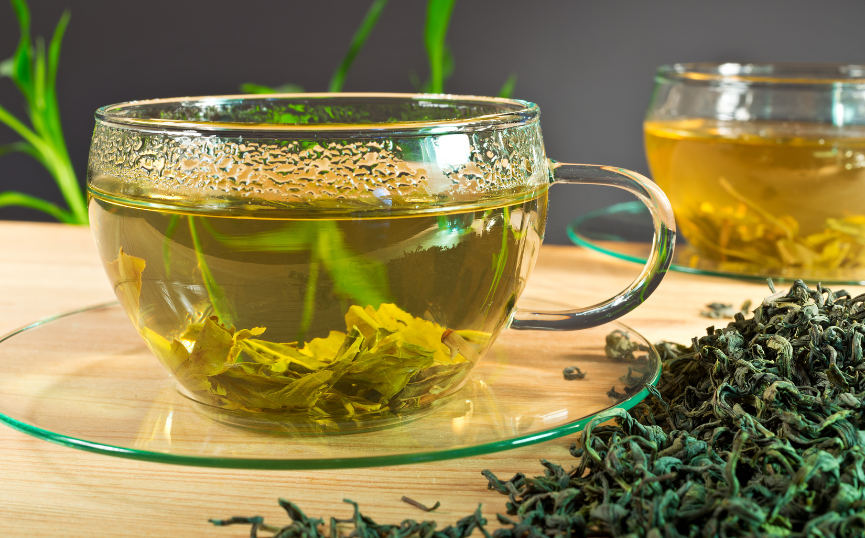
Green tea extract can be particularly effective in boosting the immune system and slowing down the ageing process. And if you choose green tea extract with caffeine, it can also have a mild stimultant and fat-burning effect. Pro tip: caffeine supplements can only be used if you monitor your daily caffeine intake. The total should not be more often than 400 mg – for an individual with a healthy cardiovascular system, and a maximum of 200 mg is recommended during pregnancy.37
If you opt for a caffeinated version, choose Now Foods Green Tea Extract 400 mg. This contains only 4 mg of caffeine per serving, but for those sensitive to it, even this may be too much.
If you’re looking for a high potency, but decaffeinated version, go for Life Extension Decaffeinated Mega Green Tea Extract 725 mg.
2. Resveratrol
Resveratrol is a polyphenol found in the skin of grapes and in red wine. It is best known for its anti-ageing effects. Its main benefits are:
- Protects cells from premature ageing. This effect is explained by a lengthening of the telomeric region at the end of the hereditary material, a shortening that has been linked to the ageing process. Resveratrol has a unique ability to lengthen this region. The other explanation is that resveratrol activates the longevity gene SIRT1, which has been linked to cell regeneration and increased lifespan.17-18 Important fact: the truth is that the tumour cells often do not have a shortened telomere, which is why they can divide so quickly. So the effect of resveratrol in cancer patients is not clear. Therefore, in the case of tumours (por suspected tumours), a doctor should be consulted before taking resveratrol supplements, especially if the patient is already receiving oncological treatment.
- Improves cardiovascular health by supporting blood vessel elasticity and reducing inflammation. The latter property is important because inflammation underlies most cardiovascular problems.19
- It can help control blood glucose levels, so it may also benefit diabetics. 20-21
Many people may now think it’s great! Another argument for drinking red wine. Although good quality dry red wine has a higher resveratrol content, it is still not recommended as a substitute for resveratrol. This is because even the highest resveratrol content wine contains only 7 mg per litre.38 For comparison, dietary supplements contain 40 mg per serving. In some ways, it is good to drink a little wine now and then, but it is far from worth drinking every day. In the long run, the alcohol in it will have a negative effect on otherwise healthy effects.
Life Extension Optimized Resveratrol Elite™ - Resveratrol capsules are the most professional solution for resveratrol supplementation.
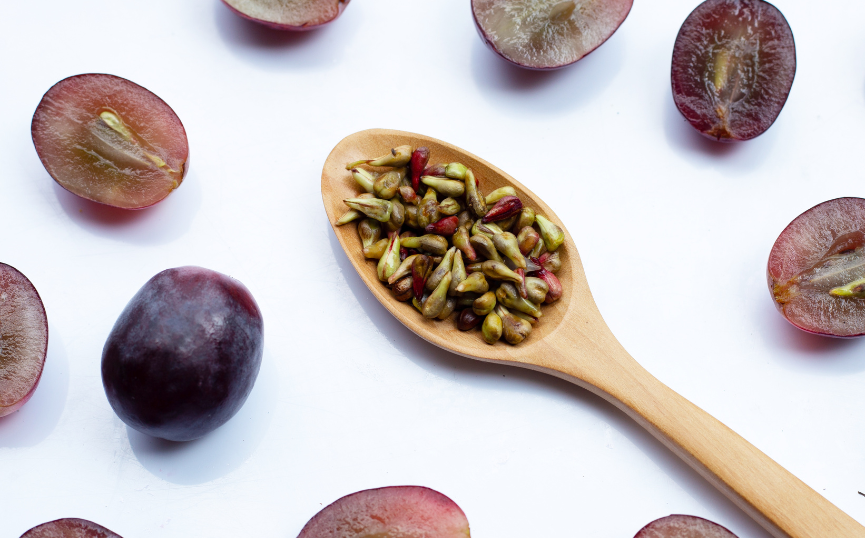
3. Grape seed extract
The skin is not the only healthy part of the grape! The nutritional value of grape seeds is often underestimated, even though they are extremely rich in oligomeric proanthocyanidins (OPCs), which have powerful antioxidant properties. These are the active substances:
- They can support collagen production, together with their anti-inflammatory effects, help to maintain skin elasticity and a youthful appearance.22-24
- They may improve blood circulation, reducing the risk of heart disease and varicose veins.26 They may have general cardiovascular protective effects.25
- They may have a strong anti-inflammatory effect, thus contributing to the health of the immune system.22
If you decide to buy grape seed extract, choose the: OstroVit Grape Seed Extract Vege Powder.
4. Astaxanthin
Astaxanthin is a red pigment found in microalgae and is one of the most powerful natural antioxidants.27
Properties of astaxanthin:
- In some studies, its antioxidiant effects have been found to be stronger than even vitamins C and E.27
- Protects the skin from damaged caused by UV rays, helping to maintain skin elasticity.30
- It supports brain health and can improve cognitive function.29
- It reduces muscle recovery time, which can be particularly useful for athletes.28
- It has an anti-inflammatory and analgesic effect, which can help with joint problems.31
Jarrow Formulas AstaPure® Astaxanthin 12 mg may be a good choice for astaxanthin replacement.
Why use the together?
While each antioxidant is highly effective on its own, when combined they can provide even more powerful protection. Although studies rarely look at their combined effects, here are some combinations that have been confirmed by studies:
- Together, green tea extract and resveratrol may enhance cellular health.32-34
- Resveratrol and astaxanthin (together with Vitamin V and collagen peptides) have been shown to have strong anti-inflammatory effects in a recent study.35
- Research has shown that green tea extract and grape seed extract can enhance each other’s antioxidant effects.36
Summary
During the cold months, our bodies are under increased oxidative stress, which is why antioxidant intake is crucial. Green tea extract, resveratrol, grape seed extract and astaxanthin combine to protect cells, strengthen the immune system and support healthy ageing. If you want to maintain your vitality in the winter months, it’s worth incorporating these into your daily routine. Vitamin360 recommends the following product combinations:
Life Extension Optimized Resveratrol Elite™ + Now Foods EGCg Green Tea Extract 400 mg + GAL Multivitamin (60.2 g) – For winter vitality and youthful vigour!
or
Jarrow Formulas Asztaxantin 12 mg - AstaPure® + Life Extension Optimized Resveratrol Elite™ + GAL Multivitamin (60.2 g) – For enhanced anti-inflammatory properties!
or
OstroVit Grape Seed Extract Vege Powder + Now Foods EGCg Green Tea Extract 400 mg + GAL Multivitamin (60.2 g) – If you’re looking for a really powerful antioxidant combination fot the cold, immune-heavy months!
Choose any of the three and you're guaranteed not to be disappointed!
- Halliwell B. Antioxidants in human health and disease. Annu Rev Nutr. 1996;16:33-50. doi: 10.1146/annurev.nu.16.070196.000341. PMID: 8839918.
- Phaniendra A, Jestadi DB, Periyasamy L. Free radicals: properties, sources, targets, and their implication in various diseases. Indian J Clin Biochem. 2015 Jan;30(1):11-26. doi: 10.1007/s12291-014-0446-0. Epub 2014 Jul 15. PMID: 25646037; PMCID: PMC4310837.
- Pizzino G, Irrera N, Cucinotta M, Pallio G, Mannino F, Arcoraci V, Squadrito F, Altavilla D, Bitto A. Oxidative Stress: Harms and Benefits for Human Health. Oxid Med Cell Longev. 2017;2017:8416763. doi: 10.1155/2017/8416763. Epub 2017 Jul 27. PMID: 28819546; PMCID: PMC5551541.
- Ali, Yomna & Alshammary, Mona & Rahil, Mona & Elkhateeb, Yomna. (2017). Effects of Fast Foods in Relation to Free Radicals and Antioxidants. American Journal of Laboratory Medicine. 2. 156-162. 10.11648/j.ajlm.20170206.17.
- Tyrrell RM. Ultraviolet radiation and free radical damage to skin. Biochem Soc Symp. 1995;61:47-53. doi: 10.1042/bss0610047. PMID: 8660402.
- Sly PD, Cormier SA, Lomnicki S, Harding JN, Grimwood K. Environmentally Persistent Free Radicals: Linking Air Pollution and Poor Respiratory Health? Am J Respir Crit Care Med. 2019 Oct 15;200(8):1062-1063. doi: 10.1164/rccm.201903-0675LE. PMID: 31237999; PMCID: PMC7330507.
- Wu D, Cederbaum AI. Alcohol, oxidative stress, and free radical damage. Alcohol Res Health. 2003;27(4):277-84. PMID: 15540798; PMCID: PMC6668865.
- Church DF, Pryor WA. Free-radical chemistry of cigarette smoke and its toxicological implications. Environ Health Perspect. 1985 Dec;64:111-26. doi: 10.1289/ehp.8564111. PMID: 3007083; PMCID: PMC1568603.
- https://www.sciencedirect.com/science/article/abs/pii/S0167732220375140
- https://www.frontiersin.org/journals/chemistry/articles/10.3389/fchem.2024.1443718/full
- Ohishi T, Goto S, Monira P, Isemura M, Nakamura Y. Anti-inflammatory Action of Green Tea. Antiinflamm Antiallergy Agents Med Chem. 2016;15(2):74-90. doi: 10.2174/1871523015666160915154443. PMID: 27634207.
- Wang S, Li Z, Ma Y, Liu Y, Lin CC, Li S, Zhan J, Ho CT. Immunomodulatory Effects of Green Tea Polyphenols. Molecules. 2021 Jun 20;26(12):3755. doi: 10.3390/molecules26123755. PMID: 34203004; PMCID: PMC8234133.
- Ohishi T, Goto S, Monira P, Isemura M, Nakamura Y. Anti-inflammatory Action of Green Tea. Antiinflamm Antiallergy Agents Med Chem. 2016;15(2):74-90. doi: 10.2174/1871523015666160915154443. PMID: 27634207.
- Singh NA, Mandal AK, Khan ZA. Potential neuroprotective properties of epigallocatechin-3-gallate (EGCG). Nutr J. 2016 Jun 7;15(1):60. doi: 10.1186/s12937-016-0179-4. PMID: 27268025; PMCID: PMC4897892.
- Kapoor MP, Sugita M, Fukuzawa Y, Okubo T. Physiological effects of epigallocatechin-3-gallate (EGCG) on energy expenditure for prospective fat oxidation in humans: A systematic review and meta-analysis. J Nutr Biochem. 2017 May;43:1-10. doi: 10.1016/j.jnutbio.2016.10.013. Epub 2016 Nov 2. PMID: 27883924.
- Ciccone L, Piragine E, Brogi S, Camodeca C, Fucci R, Calderone V, Nencetti S, Martelli A, Orlandini E. Resveratrol-like Compounds as SIRT1 Activators. Int J Mol Sci. 2022 Dec 1;23(23):15105. doi: 10.3390/ijms232315105. PMID: 36499460; PMCID: PMC9738298.
- Ciccone L, Piragine E, Brogi S, Camodeca C, Fucci R, Calderone V, Nencetti S, Martelli A, Orlandini E. Resveratrol-like Compounds as SIRT1 Activators. Int J Mol Sci. 2022 Dec 1;23(23):15105. doi: 10.3390/ijms232315105. PMID: 36499460; PMCID: PMC9738298.
- Gutlapalli SD, Kondapaneni V, Toulassi IA, Poudel S, Zeb M, Choudhari J, Cancarevic I. The Effects of Resveratrol on Telomeres and Post Myocardial Infarction Remodeling. Cureus. 2020 Nov 14;12(11):e11482. doi: 10.7759/cureus.11482. PMID: 33329978; PMCID: PMC7735524.
- Bonnefont-Rousselot D. Resveratrol and Cardiovascular Diseases. Nutrients. 2016 May 2;8(5):250. doi: 10.3390/nu8050250. PMID: 27144581; PMCID: PMC4882663.
- https://www.sciencedirect.com/science/article/pii/S0965229922000218
- https://www.nature.com/articles/s41598-023-50084-6
- Green B, Yao X, Ganguly A, Xu C, Dusevich V, Walker MP, Wang Y. Grape seed proanthocyanidins increase collagen biodegradation resistance in the dentin/adhesive interface when included in an adhesive. J Dent. 2010 Nov;38(11):908-15. doi: 10.1016/j.jdent.2010.08.004. Epub 2010 Aug 13. PMID: 20709136; PMCID: PMC2953478.
- Vitseva O, Varghese S, Chakrabarti S, Folts JD, Freedman JE. Grape seed and skin extracts inhibit platelet function and release of reactive oxygen intermediates. J Cardiovasc Pharmacol. 2005 Oct;46(4):445-51. doi: 10.1097/01.fjc.0000176727.67066.1c. PMID: 16160595.
- Liu, X.; Xing, Y.; Yuen, M.; Yuen, T.; Yuen, H.; Peng, Q. Anti-Aging Effect and Mechanism of Proanthocyanidins Extracted from Sea buckthorn on Hydrogen Peroxide-Induced Aging Human Skin Fibroblasts. Antioxidants 2022, 11, 1900. https://doi.org/10.3390/antiox11101900
- Wang TK, Xu S, Li S, Zhang Y. Proanthocyanidins Should Be a Candidate in the Treatment of Cancer, Cardiovascular Diseases and Lipid Metabolic Disorder. Molecules. 2020 Dec 16;25(24):5971. doi: 10.3390/molecules25245971. PMID: 33339407; PMCID: PMC7766935.
- https://www.sciencedirect.com/science/article/pii/S0753332219305359
- Bjørklund G, Gasmi A, Lenchyk L, Shanaida M, Zafar S, Mujawdiya PK, Lysiuk R, Antonyak H, Noor S, Akram M, Smetanina K, Piscopo S, Upyr T, Peana M. The Role of Astaxanthin as a Nutraceutical in Health and Age-Related Conditions. Molecules. 2022 Oct 23;27(21):7167. doi: 10.3390/molecules27217167. PMID: 36363994; PMCID: PMC9655540.
- Wong SK, Ima-Nirwana S, Chin KY. Effects of astaxanthin on the protection of muscle health (Review). Exp Ther Med. 2020 Oct;20(4):2941-2952. doi: 10.3892/etm.2020.9075. Epub 2020 Jul 29. PMID: 32855659; PMCID: PMC7444411.
- Queen CJJ, Sparks SA, Marchant DC, McNaughton LR. The Effects of Astaxanthin on Cognitive Function and Neurodegeneration in Humans: A Critical Review. Nutrients. 2024 Mar 14;16(6):826. doi: 10.3390/nu16060826. PMID: 38542737; PMCID: PMC10975052.
- Ito N, Seki S, Ueda F. The Protective Role of Astaxanthin for UV-Induced Skin Deterioration in Healthy People-A Randomized, Double-Blind, Placebo-Controlled Trial. Nutrients. 2018 Jun 25;10(7):817. doi: 10.3390/nu10070817. PMID: 29941810; PMCID: PMC6073124.
- Peng YJ, Lu JW, Liu FC, Lee CH, Lee HS, Ho YJ, Hsieh TH, Wu CC, Wang CC. Astaxanthin attenuates joint inflammation induced by monosodium urate crystals. FASEB J. 2020 Aug;34(8):11215-11226. doi: 10.1096/fj.202000558RR. Epub 2020 Jul 10. PMID: 32648603.
- Amin ARMR, Wang D, Nannapaneni S, Lamichhane R, Chen ZG, Shin DM. Combination of resveratrol and green tea epigallocatechin gallate induces synergistic apoptosis and inhibits tumor growth in vivo in head and neck cancer models. Oncol Rep. 2021 May;45(5):87. doi: 10.3892/or.2021.8038. Epub 2021 Apr 13. PMID: 33864659; PMCID: PMC8025073.
- https://jchr.org/index.php/JCHR/article/view/6866
- https://www.sciencedirect.com/science/article/abs/pii/S1773224720312892
- Marzagalli M, Battaglia S, Raimondi M, Fontana F, Cozzi M, Ranieri FR, Sacchi R, Curti V, Limonta P. Anti-Inflammatory and Antioxidant Properties of a New Mixture of Vitamin C, Collagen Peptides, Resveratrol, and Astaxanthin in Tenocytes: Molecular Basis for Future Applications in Tendinopathies. Mediators Inflamm. 2024 Jul 30;2024:5273198. doi: 10.1155/2024/5273198. PMID: 39108992; PMCID: PMC11303056.
- https://www.notulaebotanicae.ro/index.php/nbha/article/download/10358/7923/40293
- Evans J, Richards JR, Battisti AS. Caffeine. [Updated 2024 May 29]. In: StatPearls [Internet]. Treasure Island (FL): StatPearls Publishing; 2025 Jan-. Available from: https://www.ncbi.nlm.nih.gov/books/NBK519490/
- Weiskirchen S, Weiskirchen R. Resveratrol: How Much Wine Do You Have to Drink to Stay Healthy? Adv Nutr. 2016 Jul 15;7(4):706-18. doi: 10.3945/an.115.011627. PMID: 27422505; PMCID: PMC4942868.




